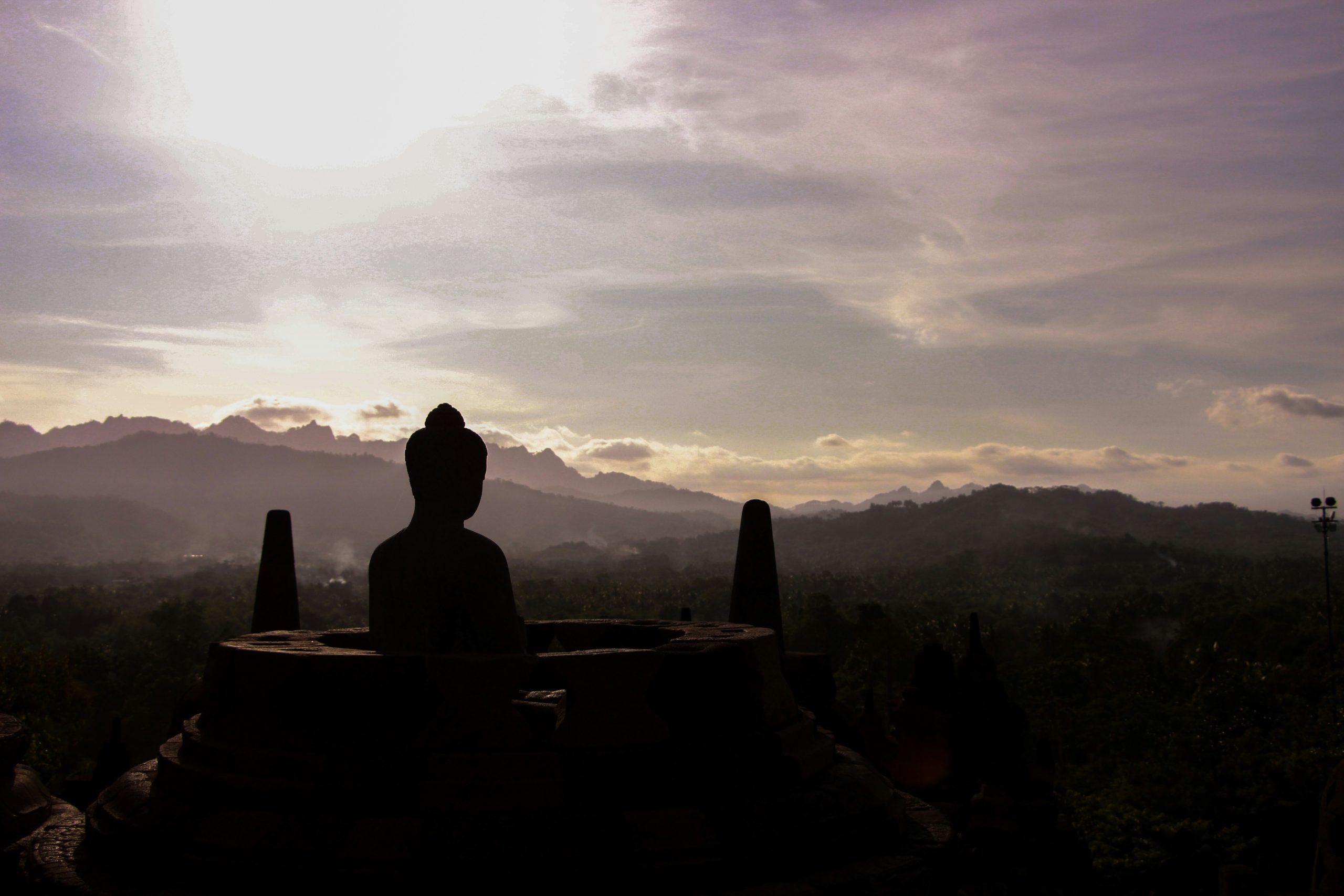Sugar-Coated Poison
Theravada monk and teacher Ajahn Martin Piyadhammo on overcoming mental defilements The post Sugar-Coated Poison appeared first on Tricycle: The Buddhist Review.

When undertaking the ascetic practices (dhutangas), we can see the mental defilements (kilesas). That’s why this form of training is so important. Without these ascetic practices, we’ll never see the kilesas in the raw, for they won’t come up as long as we have everything we need. People living a worldly life have everything at their disposal; they can go to the supermarket or have groceries delivered directly to their door. They can get anything they want, and as long as that situation continues, the kilesas are satisfied. But here, in this environment, in a forest monastery, we can’t get what we want, and this goes against the kilesas. For example, in this tradition, we follow the ascetic practice of eating only once a day, so the kilesas bring up hunger, and they even create the desire to eat things we wouldn’t normally be interested in. When I was a young bhikkhu, I found myself repeatedly putting a cake that I knew to taste awful into my alms bowl; I never ate it, but I always put it in. I must have been seduced by the kilesas into liking the form or color of the cake, even though, after reflecting on why it was in my bowl, I never actually ate it. I would never have touched such a thing before ordaining, but living in a monastery had brought the kilesas to the forefront. They draw us to nice-looking, sweet-tasting things that we find ourselves grabbing at during the meal if awareness (sati) is not sharp enough. We are drawn to them because we are not in control of ourselves. The kilesas are in control, and sugar is one of the foods that the kilesas adore.
The kilesas are very obnoxious, and we should never underestimate their power. They also include habits, and another ascetic practice—eating only from an alms bowl—reveals our habitual eating patterns very clearly. A bhikkhu has only one opportunity to choose which food to put in his bowl, so before eating he can reflect on the kinds of foods chosen and why, and what their effects are. This is a chance to develop sati, but that can take a long time, so you shouldn’t get angry if you fail at first. When you see yourself grabbing for particular foods, all you need to do is stop yourself. I often tell my bhikkhus that the best training around food is to eat the things you don’t like and avoid those you do. This is tough, of course, but we can get used to it over time.
This way of training can also be used for other activities throughout the day. For instance, bhikkhus sweep the leaves in the monastery every day to keep it clean and tidy. I remember that the leaves sometimes wouldn’t move, but I would still keep trying to sweep them away. Then I reflected that I was just too lazy to pick them up, so from then on, if the leaves wouldn’t move, I bent down and picked them up. Actually, we can practice like this throughout the whole day—deliberately doing things we don’t want to do and not doing those we like doing—and it can help greatly to reduce the strength and impact of the kilesas. It reduces them by an incredible amount, and after a while we don’t even care; we just do this practice, going against the kilesas all the time. With eating, if we practice wisely, we stop caring about the particular foods we consume. After a while, we realize that some foods have a positive impact on the body and mind while others don’t, and then we judge food in a very different way—not on its tastiness but on the effect it has on our meditation. Normally, we judge food on its taste, but we all know that things that taste good are not necessarily good for the stomach and can cause indigestion. In the world, people go for the taste [of food], get sick, and run to the medicine cabinet. They also eat too much, so that in Germany people need to drink a schnaps to help the food go down. The power of the kilesas is amazing. Than Ajahn Mahã Bua used to describe them as sugar-coated poison; we see the sugar but not the poison. When men look at women, and women at men, they see something charming and sweet, but they don’t see the poison. If we don’t develop sati, we won’t recognize this, and won’t see the truth.
The more we ingest the kilesas, the more we follow them, the more poison accumulates in the heart.
The kilesas are so powerful, and we all want the sweetness they promise. After all, children don’t run toward bitter-tasting foods, do they? Medicine is always bitter, which is why we don’t like it. In all cultures, sweet is something positive and bitter something negative; we say that someone was sweet or that we had a bitter experience. But we should think of the kilesas as sugar-coated poison pills, and reflect on this. We see only the sugar and swallow one pill after the other, but the poison doesn’t dissolve with the sugar; it remains there in the heart (citta). The more we ingest the kilesas, the more we follow them, the more poison accumulates in the heart. You can think of them as addictive drugs; you swallow them once, and a second time, and then have to keep taking them for the rest of your life. The poison that collects in the heart makes you want more, and we know how difficult it is to get rid of an addiction. What a tough life addicts have: They go through hard times, and only those with enough willpower make it through to recovery. Getting rid of the kilesas is the same, and you have to go through hard times. The kilesas won’t make it easy for you, and they’ll try to fool you, especially if you are living out in the world. They make you think that your meditation goes much better at home because you eat far less sugar than in the monastery and don’t experience the same cravings. This is how they blind you. At home you have everything you need, but in the monastery everything that the kilesas need is reduced.
When starting the dhutanga practice of eating food only once a day, people tend to overeat at the one meal, but they can train themselves to reduce the amount consumed until they start to feel hungry in the evenings. They can then learn to deal with the uncomfortable feeling of hunger, to see that it is just a feeling and that it arises and ceases. But the kilesas make a big deal out of hunger, so when people feel hungry in the evening, they overeat the next day. We think that we need a lot of food, but actually we don’t. In my experience, hunger is linked to excess acid in the stomach, but if we carry on eating little, the body adapts and produces less acid. Eventually the feelings of hunger reduce until we don’t notice them anymore.
If you want to speed up your meditation practice, you need to develop sati. It’s possible to attain enlightenment after seven days and seven nights of continuous sati—that’s what the Lord Buddha said—so make a start right now. Don’t let the mind go astray, and always keep it on the object of concentration, whether the breath at the tip of the nose, the mental repetition of the word buddho, or the object of investigation. You must keep your attention on one object. When living in a monastery, this is the only work, yet people always seem to find something else that is more important to do. And once that task is finished, they find something else that appears to be important. There seems to be no end of important things to do, but when it’s time to die, we’ll discover that we have forgotten to do the one important thing that we had set the heart on—staying with the object of meditation. And who tells us all these other things are important? It’s the kilesas. If we really have to do these other things, it’s better to do them with sati than without, but we don’t have to do most of the things that the kilesas suggest are important.
We have to put the brakes on, to stop the engine running. After all, if a car engine is running, it takes the car in whatever direction it is traveling, and if the kilesa engine is running, it just takes us wherever the kilesas want to go. We have to slam the brakes on, and that’s much easier to do in a monastery, because we know from our teachers and the monastic rules what kind of work it is proper to do and what really needs to be done. Than Ajahn Mahã Bua realized that there were tasks involved in taking care of a monastery, but he insisted that they be done quickly, with sati and without talking. He always pointed out, however, that the true work of a samana was sitting in samadhi and doing walking meditation. Please be clear about this; having sati when performing everyday tasks is all right, but it doesn’t get rid of the kilesas. The only way to destroy them is to keep your attention on the meditation object while sitting or walking when practicing for samadhi, or on the subject of investigation when developing wisdom (panna). This should be your work. Everything else is not the work of a samana.
Practices like the dhutangas are vital if we want to see how the kilesas drive our lives. The kilesas want to do things and are happy as long as they are active. When they are not in action, they are full of discontent, and that’s why they think up things for us to do. Their suggestions have a certain logic to them, but logic and rationality is a department of the kilesas. Everything is a department of the kilesas, and that’s why we need the teachings of the Lord Buddha to hold on to. We can remind ourselves of his teachings, and how he wanted us to behave as we go through daily life. Without these teachings, we would have only our own thoughts, views, and opinions, and would be trapped in the logic of the kilesas. They are the masters of rationality and smartness, magicians who have tricked us all our lives into believing something or other. Than Ajahn Mahã Bua’s point about sugar-coated poison is that people don’t see the danger in the coating and don’t even recognize that there is poison inside. They are drawn to the sweetness, the attraction of the sugar coating. He wasn’t talking about sweetness in a literal sense, of course; there are many other attractions that the kilesas can dangle before us. For instance, bhikkhus might be attracted to the idea of building another temple or constructing a better kuti. It’s all the same kind of thing; we just can’t see through the sweet coating. As soon as the kilesas are gone, we see the poison immediately, but normally we can’t see it because the kilesas rule the heart.
So how can we get rid of the kilesas? We have to stop them somehow, and we do that by adopting a lifestyle that goes completely against them, by meditating from the moment we open our eyes in the morning to the moment we close them again at night. Other kinds of work should be done only if it is absolutely necessary. There can be time for eating, washing clothes, bathing, and so forth, but otherwise we should be practicing meditation. I sometimes stress to my students that even if they want to go to the toilet, they should think twice and not just go straightaway. When you want to take a shower, ask yourself if it’s the right time. When you are living in this monastery, you can take a shower after sweeping time, but if you start wanting to shower at midday, you know something’s wrong. If you had a good meditation but feel the need to go and do something or other immediately afterward, you know that it wasn’t a good meditation for you. Rather, it was a good meditation for the kilesas, because they could think up things for you to go and do. We can easily spend our whole life following the suggestions of the kilesas, only to realize at the end, when we close our eyes for the last time, that we hadn’t done the work we were really supposed to do. Instead, we’d spent all our time running after the kilesas, trying to get whatever they thought we needed.
If you can’t stop, then you know that kilesas are involved.
I warn you: Most of the things we think are necessary are really just a product of the kilesas. Most of what we consider logical, rational, or reasonable is the way of the kilesas. That’s why we come to live in a monastery with a great Ajahn—to follow his example. Did you ever see Than Ajahn Mahã Bua carrying out unnecessary building work or running around doing unimportant things? No. When he came back to the monastery from visits to teach and help people, he went straight back to his walking (caçkama) path. Than Ajahn Mahã Bua used to stress that doing building work would make the monks rotten. It’s not that building something is wrong in itself; it’s a question of what is being built, the amount of effort that has to go into it, and whether you can stop afterward. If you can’t stop, then you know that kilesas are involved. Similarly, if laypeople living in a monastery want to perform a service for the monastic community, that’s fine, but if they endlessly want to do more and more and more—cooking, shopping, driving, and so on—it’s a sign of the kilesas. We have to put an end to these endless things.
The kilesas are not all bad or negative, however, for there are “good” kilesas. For instance, the desire to attain nibbana is necessary, otherwise we would never even begin practicing to get there. The wish to attain nibbana is a positive thing, and we can put the kilesas to work to help us get there. Also, if we recognize that we are stingy, we can use the kilesas to do good and be more open-handed until we enjoy being generous. But we have to use wanting in a skillful way; there’s no use wanting to attain samadhi but deciding not to act on it and reading a book instead. There’s nothing wrong with wanting if it’s directed toward a proper path. If we want to attain nibbana or want to have sati continuously for seven days and nights, that’s fine. The desire to end discontent (dukkha) is fine. In the end, all desire and wanting will be destroyed at the moment ignorance (avijja) is destroyed.
⬥
This excerpt was adapted from a dhamma talk given on September 27, 2009, and which was originally published in The Way to the Heart: Talks on Dhamma Practice by Ajahn Martin Piyadhammo. Copyright 2021 © by Ajahn Martin Piyadhammo (Phu Khong Tong Monastery).

 JimMin
JimMin 
































